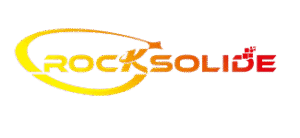Rotor Assembly for Impact Crusher
Rotor Assembly for Impact Crusher
Table of Contents
What is a Rotor Assembly for an Impact Crusher?
The Rotor Assembly is the central, rotating core of an impact crusher. It is the primary component responsible for transferring the engine’s power into the crushing action. Think of it as the “engine” of the crushing process itself.
This crucial assembly consists of several key parts:
Main Shaft (Rotor Shaft): A large, high-strength steel shaft that supports the entire assembly.
Rotor Core/Discs: A series of solid discs fixed to the shaft that provide the structural framework.
Blow Bars: The actual wear parts that are locked into the rotor and strike the feed material.
Locking Wedges & Bolts: Heavy-duty mechanisms that securely hold the blow bars in place during high-impact operation.
Bearings: Massive, heavy-duty bearings at each end that allow the rotor to spin smoothly at high speeds under immense load.

The Critical Role of the Rotor Assembly in an Impact Crusher
The rotor assembly is not just a part; it is the very heart of the machine’s function. Its primary roles are:
Power Transmission: It converts the rotational power from the motor into kinetic energy.
Accelerating Material: As the rotor spins at high speeds (typically 500-800 RPM), the blow bars mounted on it pick up the incoming feed material.
Creating Impact Force: The rotor hurls the accelerated particles towards the impact aprons (breaker plates) or against other rocks in the crushing chamber. This “rock-on-rock” or “rock-on-plate” impact is what shatters the material into the desired aggregate size.
Determining Capacity and Product Size: The rotor’s diameter, width, and speed directly influence the crusher’s capacity and the force of impact, which affects the final product shape and size.
A well-balanced, robust rotor assembly is essential for high crushing efficiency, good product cubicity, and overall machine stability.

What Materials Are Used in a Rotor Assembly?
Given the extreme forces and abrasive conditions, rotor assemblies are built from high-integrity materials:
Main Shaft: Forged from high-strength alloy steel (e.g., 34CrNiMo6) to withstand tremendous bending and torsional stresses without fracturing.
Rotor Discs: Typically made from high-quality, weldable carbon steel plates. Critical areas where the blow bars seat are often reinforced with hardfacing or replaceable wear plates to protect the core structure from abrasion.
Blow Bars: These are consumable wear parts made from various abrasion-resistant materials like High Chrome Iron, Martensitic Steel, or Ceramic Composites, chosen based on the material being crushed.
Locking Parts: Wedges and bolts are made from high-tensile steel to ensure they remain secure under vibration and impact.
Key Considerations for Using and Maintaining Your Rotor Assembly
Proper care of the rotor assembly is paramount to avoiding catastrophic failure and expensive downtime.
Proper Blow Bar Change-Out: Always replace blow bars in complete sets to maintain rotor balance. An unbalanced rotor causes severe vibration, which can damage bearings and the shaft, and may even lead to structural failure.
Regular Visual Inspections: During maintenance, inspect the rotor for cracks, especially around the disc welds and hammer seats. Check for significant wear on the discs and replace wear plates before they compromise the rotor’s integrity.
Monitor Vibration Levels: Use onboard vibration sensors or regularly check vibration readings. A sudden increase in vibration is the first sign of an issue, such as a broken blow bar, uneven wear, or bearing failure.
Correct Belt Tension: Ensure the drive belts are properly tensioned. Slipping belts can cause the rotor to slow down under load, reducing efficiency and generating excess heat.
Avoid Uncrushable Objects: Modern crushers have overload protection, but consistently feeding metal or other uncrushable objects (tramp iron) can cause sudden shock loads that damage the rotor, shaft, or bearings.
Custom Solutions for Your Unique Needs
We pride ourselves on our flexibility. We can manufacture various types of impact plates according to your requirements, including:
Different sizes and thicknesses.
Various shapes and geometries to fit any machine model.
Plates with or without mounting holes, lugs, or other custom features.
Specific material grades to match your operational needs and budget.
Conclusion: Invest in the Heart of Your Machine
The rotor assembly is the most critical and capital-intensive component of an impact crusher. Understanding its function, materials, and maintenance requirements is key to maximizing your crushing productivity and minimizing total operating costs. Investing in a high-quality rotor from a reputable manufacturer and adhering to strict maintenance protocols will ensure the heart of your crusher keeps beating strong for years to come.
